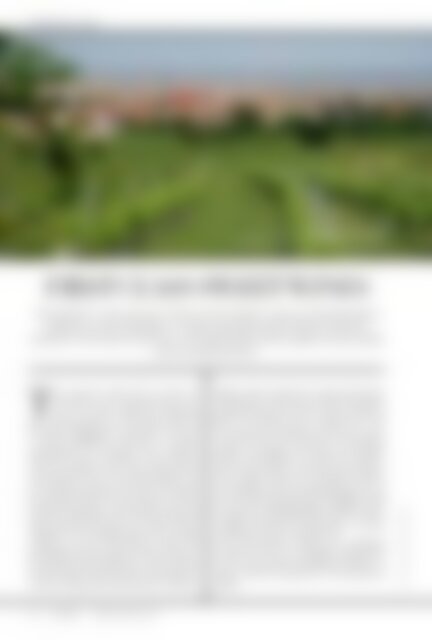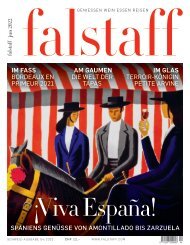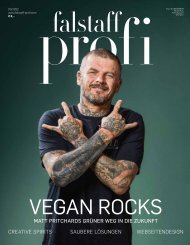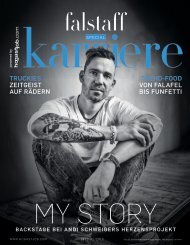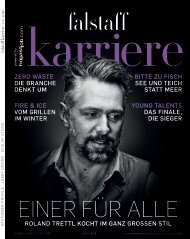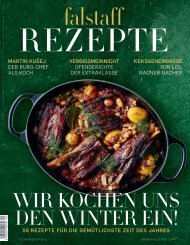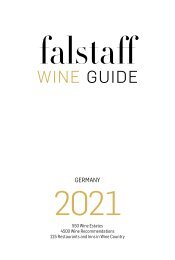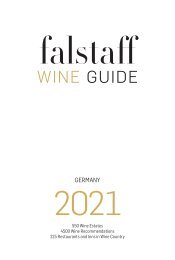Create successful ePaper yourself
Turn your PDF publications into a flip-book with our unique Google optimized e-Paper software.
BURGENLAND<br />
One finds white, red and noble<br />
sweet wine specialties of world class in Rust<br />
FIRST CLASS SWEET WINES<br />
The beautiful “royal free city” of Rust on the western shore of Lake Neusiedl is<br />
a popular tourist destination. A unique specialty called “Ruster Ausbruch”<br />
matures in the cellars of the city. This noble sweet wine brought the city wealth<br />
and international fame.<br />
The vineyards within the city limits of<br />
the historic wine community Rust comprise<br />
an enclave within the Leithaberg<br />
DAC wine-growing area. The gentle slopes of<br />
the Ruster Hügelland surround the city like<br />
a natural amphitheatre and offer an optimal<br />
macroclimate for viticulture. The enormous<br />
diversity of grapes for first-class white and red<br />
wines that grow here has a long tradition. The<br />
most famous wines are made from grapes that<br />
are infected with Botrytis cinerea in autumn.<br />
This desirable noble rot causes grapes to shrivel<br />
and thus concentrates acid, extract, aroma and<br />
sugar naturally. This wine was called “Ruster<br />
Ausbruch” in the Middle Ages and was made<br />
similarly to its role model Tokaj, at that time<br />
presumably the most expensive wine in the world.<br />
Ausbruch also brought the vintner families<br />
of Rust wealth. They were able to purchase numerous<br />
privileges that allowed them to sell their<br />
highly sought specialty far beyond the borders<br />
of Hungary. In 1524, Queen Maria of Hungary<br />
granted permission for the export barrels of<br />
Rust to be marked with a branded “R”. This<br />
was important recognition for the city, because<br />
Rust was always a guarantor of the highest<br />
quality and emphasis on origin was therefore<br />
always an important concern for the winegrowers<br />
of Rust. Today one still finds the famous<br />
“R” stamped on the corks and labels of the wines<br />
from Rust. The city purchased rights a royal<br />
free city from Emperor Kaiser Leopold I in 1681<br />
for the price of 60,000 guilder and 500 “eimer”<br />
of Ruster Ausbruch, the equivalent of around<br />
30,000 litres of very valuable wine.<br />
The Austrian <strong>Wine</strong> Academy was established<br />
in Rust in <strong>19</strong>91. It is a daughter organization<br />
of the Austrian <strong>Wine</strong> Marketing and offers seminars<br />
and wine education to an international<br />
public.<br />
© Tourismusverband Freistadt Rust<br />
306 falstaff WINE GUIDE <strong>2018</strong>


